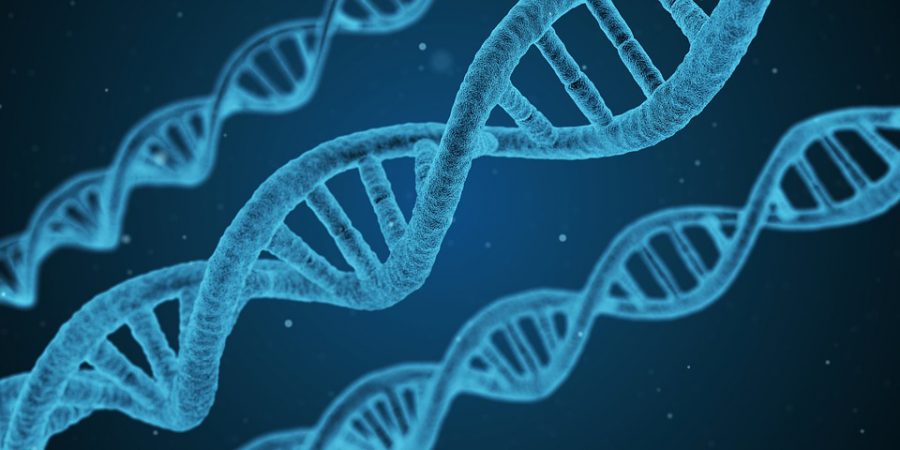Safety of gene editing tool unlikely to affect WSU researchers
Benefits to sequences outweigh potential risks, local experts say
CRISPR is a gene editing tool that can potentially be used for cancer treatments. As the practice has become more popular, concerns have been raised over the safety of the tool, but WSU researchers are not worried yet.
September 27, 2018
Gene editing is quickly becoming a serious consideration for medical professionals and animal researchers as a way to combat disease and create more productive food animals.
That technology is already in use worldwide. In China, the Hangzhou Cancer Hospital is implementing the gene editing tool CRISPR, clustered regularly interspaced short palindromic repeats, for possible cancer treatment.
Closer to home, researchers at WSU are using the technology to study the function of genes and look for ways to improve food animal productivity through increasing fertility and decreasing disease risk.
However, a study published this summer led to some doubts about the safety of one of the most common, affordable methods of gene editing, CRISPR-Cas9, which refers to “CRISPR associated” protein 9.
That research suggested that CRISPR caused genetic changes to cells that were not targeted for edits — meaning unintended changes from gene edits could occur and, theoretically, cause more harm than good.
However, WSU researchers say it’s too early to start worrying.
“I think that it’s a concern that’s been played up a little bit too much and doesn’t really have any solid experimental evidence to back it up,” said Jon Oatley, director of the Center for Reproductive Biology.
The effect to surrounding genes is debatable, Oatley said, and there have been few, if any, cases reported of unintended changes brought on by CRISPR editing.
Whether those changes are really happening is unclear, he said. Even if they are, they might not be significant to health.
“If the changes that are happening are in portions of your DNA that aren’t affecting your life processes, does it really matter?” Oatley said. “Whether there are unintended changes from CRISPR-Cas are debatable, and whether it really matters is debatable.”
One significant change possible off-target edits could make, Oatley said, is in research.
“Off-target changes that could happen could make interpreting your research challenging, because now you can’t control your experimental parameters as closely as you want to,” he said.
Most research the university does is in labs, said Zhihua Jiang, a comparative genomics professor, so it’s not going to affect animal or human health like it could in vivo, where treatments are tested on a living animal. The research is also often targeting specific genes, so the use of CRISPR is limited.
“We have lots of layers of protection,” he said. “If you find some kind of off-target issues [in the lab], we won’t use the material.”
It is also easy to see if CRISPR edits did make unintended changes, Shane Carrion, a graduate student specializing in genetics, said.
“The benefit of CRISPR is it’s easy to see when it went off target and where it went off target,” Carrion said.
CRISPR is also currently one of the most preferable gene editing tools because of its versatility and relatively affordable price, he said.
Transcription activator-like effector nuclease (TALENS), “zinc fingers” and RNA interference are all alternatives to CRISPR gene editing, but have their own drawbacks.
RNA interference is limited in its ability to change cells, Carrion said. Meanwhile, TALENS and zinc fingers are more precise, but also incredibly costly and time-consuming.
Coming up with a specific target with CRISPR-Cas9 might take him an afternoon, Carrion said.
For TALENS or zinc fingers, the process is much more complex and time-consuming. Carrion said he hasn’t designed either of the more-complex designs personally, but said he estimates it would take “at least a couple days.”
“If you’re designing a zinc fingers or a TALENS, that’s probably 700 amino acids,” he said.
Just two years ago, WSU started its Functional Genomics Initiative as part of its efforts to increase genetic research.
“We have done lots of work on genetic polymorphisms that are responsible for marbling in beef and disease-related issues in animals,” Jiang said.
Oatley’s lab uses CRISPR to create and study gene abnormalities.
“My research lab uses it to study the function of genes,” Oately said. “If we want to determine what its function might be, we’ll use CRISPR-Cas9. We’ll really never know what normal is until we know what the abnormal is. So we find out what the abnormal is by mutating the gene.”
While genetic editing has various human health care implications, genetically-caused diseases that could be treated with DNA editing are limited, Oatley said.
“Treating human diseases is great, and I’m all for it, but it impacts a very small number of people,” he said.
The biggest benefit for gene editing, he said, is increasing food security worldwide.
“Being able to feed people has a bigger societal impact,” Oatley said. “I think food animals is where it is.










